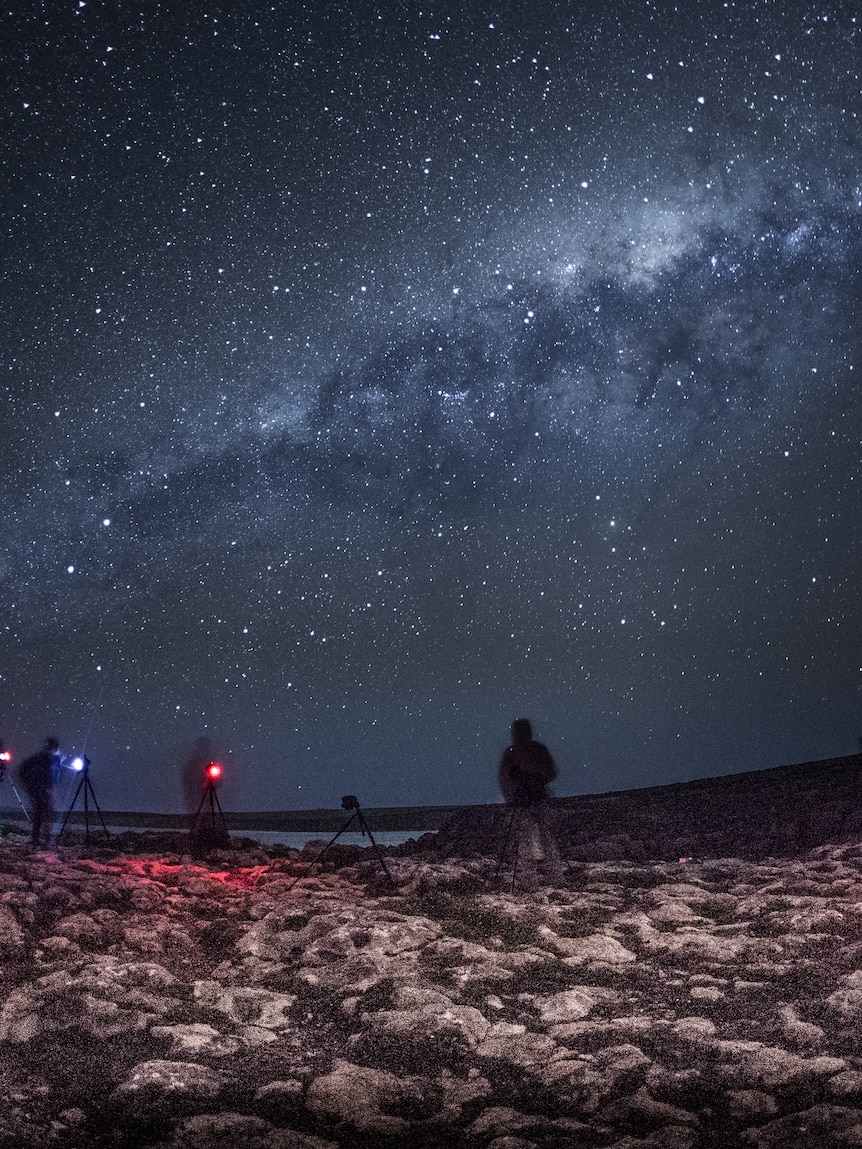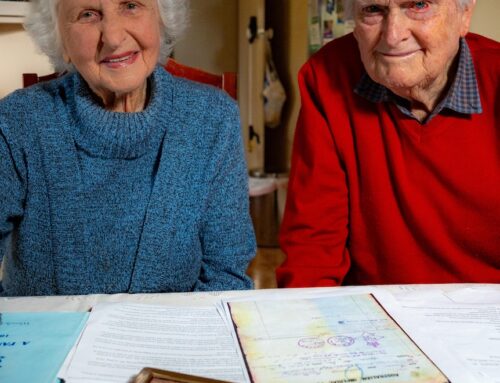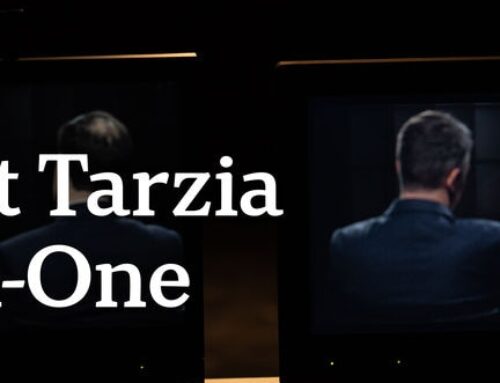Last summer, astronomer Brad Tucker took a bunch of US university students outside to look at the night sky.
As they gazed up, Dr Tucker was asked to point out the Milky Way — that broad swathe of bright stars, comprising our galaxy, that crosses the sky.
He was surprised by the request because these were astronomy students.
“It’s not that they didn’t know what the Milky Way was,” Dr Tucker said.
“They had just never seen it.”
The students, from Portland, Oregon, were amazed to finally set eyes on the Milky Way in real life.
Dr Tucker, who also works at Canberra’s Mt Stromlo Observatory, has seen similar reactions when taking children to see the Milky Way, especially those from Brisbane, Sydney or Melbourne.
“That’s never surprised me because kids like seeing all these new things.
“But university students who are studying in this field … it was really, I think, the first time my mind got blown by this concept of light pollution.”
Light pollution occurs when “sky glow” — caused by light from artificial sources — is so powerful that it overpowers light emitted by stars.
How brightly the sky glows is related to the number, intensity and design of artificial lights.
“Imagine you have a little torch and you’re standing outside, and then you’re standing next to a car and the car turns on its headlights,” Dr Tucker said.
“You’re not going to see that torch.”
See how your location affects your night sky
In 2016, scientists estimated that about 80 per cent of people lived under light-polluted skies, with the Milky Way no longer visible to a third of us.
This means that the vast majority of us don’t see the night sky our ancestors did.
“It really takes me aback that we’ve lost this as a society, that there’s many people around the world, literally billions, who have not experienced that view,” Dr Tucker said.
“For as long as humans have been on this planet, that’s been part of our culture, our lives, our experiences, and we’ve wiped that out in little more than a century.”
Light pollution in Australia
Australia has the lowest proportion of land area affected by light pollution among G20 countries.
But it’s a different story when you look at light pollution per person: Australia has one of the highest rates among G20 countries, surpassing the US, Russia, Japan, the UK, and France.
“Despite the majority land mass of Australia being able to see the Milky Way, the overwhelming majority of people have light pollution,” Dr Tucker said.
This means a large proportion of Australians probably can’t see the Milky Way from their home.
Can you see the Milky Way where you live? Let the ABC and scientists know by filling out the survey at the end of this story.
“Even some of the town centres in the inner parts of Australia, [such as] Toowoomba, Dubbo, Bendigo, as those population centres become bigger, the light spill grows,” Dr Tucker said.
Remote areas of Australia are not immune to sky glow, with mines and offshore drilling showing up as light pollution sources on satellite images (satellites also contribute to light pollution).
And levels of light pollution globally have been increasing rapidly, by an average 10 per cent per year from 2011 to 2022, according to citizen science project Globe at Night, which measures “seen” light pollution from the ground.
Light pollution solutions
The good news is that, unlike other pollutants such as CO2 or plastic, light pollution doesn’t hang around once its source is removed.
Turn off enough lights, and the Milky Way will reappear, as residents of Los Angeles discovered in 1994 when an earthquake caused a large-scale power outage.
But in reality, reducing light pollution is a complicated issue. We need light in our towns, suburbs and cities.
But do we need all that light? Could they be dimmed? Do they have to stay on all night?
Dr Tucker said loads of work is being conducted around the world to understand the sources that contribute to light pollution, and find simple ways to change them.
“Our needs of light change. What I do in an evening is different to someone else,” he said.
“It differs from time of night, day of the week.”
Luckily, modern technology provides more controls than just an on/off switch.
LED lights are naturally “directional” and minimise the spill of light in directions we don’t need it.
They also come in a range of colour temperatures (warmer LEDS produce less light pollution than cooler) and many of them have “smart” controls.
In Canberra, where many street lights have been updated to smart LEDs, Dr Tucker is involved in a project to assess what’s known as “adaptive lighting” — dimming or brightening street lights to match people’s needs at the time.
Adjust these suburban lights and see how they change the night sky (notes)
The project was initiated in 2022 by Danny Bettay, then an intern with Omexom, the ACT government principal contractor responsible for managing Canberra’s lighting.
“The idea was … we’ve got smart lights, we’ve got these capabilities but we hadn’t used them at all since the new lights were installed in 2018,” Mr Bettay, who is now a PhD candidate at the Australian National University, said.
“We conducted the first experiment back in 2022 and we dropped the lighting output to 70 per cent. And we had no [negative] responses from the public.”
By 2024, Omexom embarked on a city-wide trial to reduce the lighting levels in the “quiet” hours (11pm to 5am) while Dr Tucker measured its impact on sky glow.
“For every 10 per cent we dim the street lights in Canberra we reduce the sky brightness by 5 per cent … so we darken the sky by 5 per cent,” Dr Tucker said.
Eventually it’s hoped that adaptive lighting may become smart enough to respond dynamically, such as increasing light intensity in poor weather conditions, reducing during a full moon, or responding to events, such as a concert or big sports match, that increase the number of people out at night.
Dimming lights also has another bonus — lower energy use and carbon emissions.
Ideally, a wide range of stakeholders would be considered when redesigning lighting to meet community needs, as well as ecosystem needs (such as nocturnal animals).
But there are other issues that may get in the way of reducing light pollution.
While there are national light pollution guidelines for wildlife, and various Australian lighting standards, there is no legislation for dealing with light pollution.
Then there’s the added complication that street lighting in Australia is often paid for by local councils, but owned by energy companies who may not prioritise updating them.
And there’s the issue of cities, which by their very nature are saturated in 24-hour light.
The value of natural darkness and a starlit sky
But does it really matter if we can’t see the Milky Way where we live? Especially if we can still visit a dark sky location for a fix?
“Natural darkness” — darkness unaffected by artificial light — is what humans evolved with.
When natural darkness is replaced by a night sky flooded with artificial lights, our circadian rhythm and sleep can be affected, and the risk of conditions, such as some cancers may rise.
Many animals also evolved with natural darkness, and some rely on it for navigation, reproduction, and safety.
The dark night sky has enormous cultural importance, especially for Indigenous Australians.
Pristine dark skies are also a requirement for astronomers (both professional and amateur) using telescopes from Earth.
But perhaps the most important value of the night sky is its sheer beauty, and ability to put us in our place in the cosmos, to remind us that we’re a small part of something incredible and awe-inspiring.
Marnie Ogg, founder of the Australasian Dark Sky Alliance (ADSA), is positive that Australia is in a good position to address light pollution before it gets to North American and European levels.
“There’s certainly a trend of light pollution growing around the world,” Ms Ogg said.
“But I also think that there’s a groundswell of people that are coming together that don’t want this to happen in Australia.
“We haven’t ruined Australia yet.”
Ms Ogg, whose home suburb recently became Australia’s first Urban Night Sky Place, and Dr Tucker are positive that Australia will maintain what dark skies it currently has.
But Dr Tucker said that cities are especially hard to turn “dark” at night, but not impossible.
“You have to change your concept of what your needs are to be a dark city.”
Interactive notes
Both interactives are based on the Bortle scale, as well as results from Dr Tucker’s experiments in Canberra.
The lighting change interactive is based on a hypothetical suburban area with a Bortle scale level of 7 with light pollution sources: street lights (50 per cent); house lights (40 per cent); sport lights (10 per cent). Solutions to light pollution: changing street lights to LED (50 per cent reduction in light pollution from that source); dimming street lights to 70 per cent (15 per cent reduction); changing sport lights from cool to warm LEDs (15 per cent reduction); shielding outside lights (50 per cent reduction).
Credits
Concept and production: Kylie Andrews
Development: Andrew Hystek-Dunk, Matthew Heffernan
Design: Brett Tweedie
Production: Chloe Brice
Expert advice: Dr Brad Tucker
Back to lighting change interactive
Get all the latest science stories from across the ABC.





